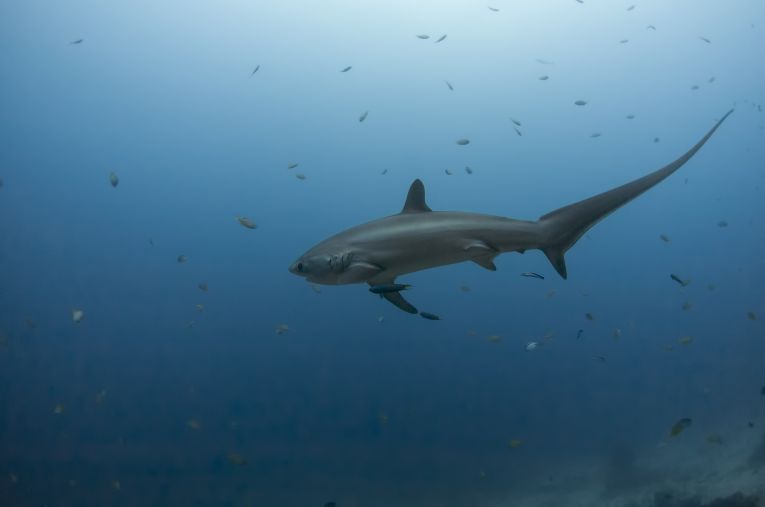When you snorkel next around Cebu, have a check on this magnificent shark. He fishes in a violent but magnificent way that ensures a catch of more than one fish, to make up for times when he misses. The authors of this paper have finally come up with the evidence that the three thresher shark species, in this case Alopias pelagicus, really can use their tails to catch sardines. Their nearest relatives are the basking sharks and the mackerel sharks, but the speciality of this genus is the length of the caudal fin which doubles the length of the animal in some cases.
Bait balls of sardine such as Sardinella longiceps occur frequently off the NW of Cebu in the Philippines. Elsewhere, orcas or dolphins are the predators of these fish, but around the coral island of Pescador, 5km offshore, the vulnerable pelagic thresher shark is the top predator.
The slapping of the tail is a common predatory and communication technique used by many cetacean species and in sharks, it has been observed to reduce competition among great whites. For 70 days, John R. Turner and his colleagues videoed 25 examples of hunting behaviour at depths between 10 and 25m, using divers who spent one hour filming.
The results of great preparation and advanced analysis of the sharks' manoeuvring were 22 vertical tail slaps and only 3 sideways attempts. While threshers are thought to be nocturnal, when manoeuvres might be different, all recordings were in daylight near the surface. The 4 stages are wind-up, strike, recovery of the tail position, then collection of the stunned or dead sardines.
Pectoral and tail fins are evolved in these species so that tail-slap deployment is possible, so it's likely that the musculature will be equally adapted. In future, it is hoped that further work on the kinematics will include these muscular and physical processes. The journal, PLoS ONE, published the data this week.










